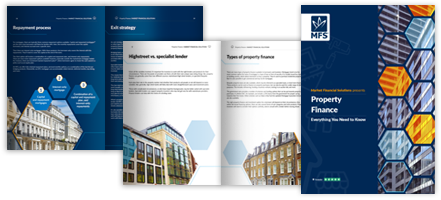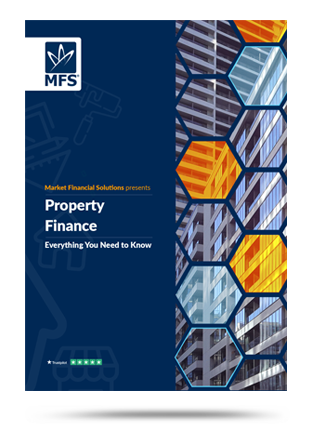Disclaimer
Market Financial Solutions are a bridging loan and buy-to-let mortgage provider, not financial advisors. Therefore, Investors are encouraged to seek professional advice. The information in this content is correct at time of writing.

The property world has faced a tough few years. The housing market, post covid, has struggled to adapt in certain areas. What’s more, it’s also been beset by a number of other challenges since we put the worst of the pandemic behind us.
So, how has the housing market changed since lockdown, and are the issues we face too difficult to overcome? As some may expect, the doom-and-gloom seen in the press does not represent the whole story.
While we’re not out of the woods yet, the housing market post covid is in much better shape than many would think. This blog will cover how the property market has fared since we got covid under control, and what the outlook looks like.
Setting a Timeframe
Before we can look at the housing market post covid however, we first need to set a timeframe. Covid-19 is still among us but fortunately, we have it under relative control[1].
For the purposes of this blog, we will be exploring the state of the economy and property market from February 2022 onwards. It was on February 24th that all restrictions and measures were lifted, and we began learning to “live with the virus”[2].
Our collective financial and societal recovery, arguably, started here.
House Prices Post Covid
It would be impossible to examine the housing market post covid without looking at house prices. While facing many pressures in more recent months, house prices have staged a promising recovery.
The latest data from the Land Registry shows that between February 2022 and March 2024, average house prices rose from £269,665, to £282,776.
This is only part of the picture, however. The pandemic was so impactful that tastes and preferences among buyers and investors shifted dramatically. Flexible working, as an example, is now a fact of life for many businesses and workers.
Employees across the UK found that they no longer needed to be within an hour of the office. They could get their work done from anywhere. As such, many “escaped to the country[3]”, seeking out greener pastures, more space, or picturesque seaside views. This sent prices in certain rural locations skyrocketing, although we’re starting to see a reversal here[4].
Correspondingly, as demand for office and retail space waned, commercial property prices came under pressure. Globally, commercial real estate values fell by 12% in 2023, according to the IMF[5]. Some of our busiest cities are relatively empty these days[6] but, once again, there are signs of recovery in the current UK commercial market[7].
The residential rental scene was also dramatically affected by the pandemic, and its fallout. Landlords saw their income drop during lockdown years[8], and other challenges still linger[9]. Many feared we’d experience a landlord exodus in light of recent economic and political issues, but these fears proved overblown.
While some likely did sell up, supply in the in the market has remained relatively stable since 2020. Meanwhile, demand for rental property is still vastly outweighing availability[10].

How About the Mainstream Lending Scene?
Borrowers, investors, and consumers were not the only ones to be affected by the pandemic. The housing market post covid proved difficult for lenders to operate in too.
The lockdown measures put in place to keep us all afloat are now costing us. It’s estimated that the government spent between £310bn to £410bn on covid support measures[11], with the state needing to borrow to afford it all.
We’re now experiencing the aftermath of that in some form or another. Inflation has jumped, in turn forcing interest rates higher. Also, in an attempt to get a handle on the economy, Liz Truss announced plans for £45bn of unfunded tax cuts in September 2022[12]. This panicked the market, and sent the economy into a downward spiral.
With an uncertain outlook, mainstream lenders were forced to adapt. Thousands of mortgage deals were pulled from the shelves[13]. Those that managed to slip through likely didn’t stick around for long. In March 2024, Moneyfacts found that mortgage deals were typically on offer for no more than 15 days before they were pulled. The shortest shelf-life seen in six months or so[14].
What’s more, lending criteria was tightened across the board as the cost-of-living crisis worsened[15]. Affordability is a key issue for borrowers, especially first-time buyers[16]. Unfortunately, mortgage arrears hit an almost eight-year high in the first quarter of 2024, according to the Bank of England[17].
A Well-Earned Recovery
Still, more recent months have been kinder to the economy and, by extension, the property market. Inflation is currently below target, and the lowest it has been since July 2021[18]. The Bank of England has cut the base rate repeatedly and, despite a very recent stagnation[20], we experienced the fastest growth in two years between January and March, ending a recession in the process.
Elsewhere, Paragon Bank found that rental yields hit 6.1%[21] in Q1, a six year high. While Savills revised its UK house price growth forecast upwards, with the average house expected to have £61,500 added to its value by 2028[22]. The coming years could see a true rebound in fortunes.
Looking to the Future Housing Market Post Covid
As we continue to move through a housing market post covid, preferences are likely to evolve. In 2021, we conducted independent research on what were the most important factors for people when looking to purchase a residential property. The results showed garden space, square footage, and broadband and mobile connectivity were of the utmost important to buyers[23].
Fast-forward to mid-2023, and attentions shifted onto the quality of rental properties, tax reform, and stamp duty changes[24]. Separate research we’ve produced recently also found that investors specifically have high hopes for the BTL market[25], and want to see clear action on tackling the issue of derelict buildings[26].
Of course, how we proceed over the coming months and years will largely depend on the results of the upcoming election. Housing wise, so far, we know the conservatives (according to their manifesto[27]) aim to boost availability of affordable housing for locals in rural areas, while ensuring councils have powers to manage holiday let growth. Plans to get spending under control, and cut taxes have also been put forward.
Labour’s manifesto laid out plans to build 1.5 million new homes, and ban no fault evictions[28]. Tougher fiscal rules were also put forward along with minimum wage changes, and goals for public ownership.
We will likely be in a post covid housing market for some time. Its affects will linger for years to come. Answering the question of how has the market changed since lockdown will be an ongoing effort. While we figure it all out, Market Financial Solutions will be there providing unique forms of finance for equally unique challenges.
The Complete Guide to
Property Finance
Everything you need to know
- Foundation & different finance types
- Useful tools
- Apply them in real life
- Market insights & more
[1] https://www.ons.gov.uk/peoplepopulationandcommunity/healthandsocialcare/conditionsanddiseases/articles/selfreportedcoronaviruscovid19infectionsandassociatedsymptomsenglandandscotland/november2023tomarch2024
[2] https://inews.co.uk/news/first-lockdown-timeline-covid-restrictions-uk-2020-third-anniversary-23-march-2228880
[3] https://www.centreforcities.org/publication/escape-to-the-country/
[4] https://www.ft.com/content/40dd631a-51cf-4816-895b-d36479f30d04
[5] https://reaction.life/commercial-real-estate-has-not-recovered-from-the-pandemic/
[6] https://www.bbc.com/worklife/article/20230817-major-cities-are-now-with-filled-with-empty-office-buildings-what-happens-next
[7] https://www.fmj.co.uk/rics-survey-shows-signs-of-recovery-for-the-uk-commercial-property-market/
[8] https://www.nrla.org.uk/research/deep-insight/covid-rental-market-one-year-on
[9] https://www.ukfinance.org.uk/news-and-insight/blog/buy-let-time-challenge-and-opportunity
[10] https://www.buyassociationgroup.com/en-gb/2024/06/10/uk-rental-market-land/
[11] https://commonslibrary.parliament.uk/research-briefings/cbp-9309/#:~:text=Current%20estimates%20of%20the%20total,the%20pandemic%20for%20that%20year.
[12] https://www.bbc.co.uk/news/business-66897881
[13] https://www.theguardian.com/money/2023/jun/05/uk-banks-pull-hundreds-more-home-loan-deals-as-fixed-mortgage-rates-rise
[14] https://www.bbc.co.uk/news/business-68574065#:~:text=Mortgage%20deals%20are%20typically%20on,decide%20when%20rates%20are%20volatile
[15] https://www.reuters.com/business/finance/experian-third-quarter-revenue-rises-steady-demand-loans-2023-01-17/
[16] https://inews.co.uk/inews-lifestyle/money/property-and-mortgages/first-time-buyer-worst-time-2849225
[17] https://www.ft.com/content/e30f28b2-6e75-4550-8104-4a45a3427376
[18] https://www.ons.gov.uk/economy/inflationandpriceindices/bulletins/consumerpriceinflation/april2024
[19] https://news.sky.com/video/andrew-bailey-tells-sky-news-that-based-on-where-we-are-today-and-the-world-not-changing-the-path-is-downwards-for-interest-rates-13132323#:~:text=News%20%7C%20Sky%20News-,Andrew%20Bailey%20tells%20Sky%20News%20that%20’based%20on%20where%20we,rate%20will%20hold%20at%205.25%25
[20] https://www.bbc.co.uk/news/articles/clmmvnpr8n8o
[21] https://www.paragonbank.co.uk/press-releases/average-rental-yields-hit-six-year-high
[22] https://www.savills.co.uk/insight-and-opinion/savills-news/359581-0/savills-upgrades-five-year-forecast-for-uk-house-price-growth
[23] https://www.mfsuk.com/wp-content/uploads/2022/03/The-Homebuyer-Wishlist.pdf
[24] https://www.mfsuk.com/property-policy-wish-list/
[25] https://www.mfsuk.com/property-investment-trends/
[26] https://www.mfsuk.com/empty-buildings/
[27] https://www.telegraph.co.uk/politics/0/tory-manifesto-rishi-sunak-policies-general-election/#nhs-and-social-care
[28] https://www.huffingtonpost.co.uk/entry/labour-party-manifesto-key-points-keir-starmer-promises-to-stop-the-chaos-of-tory-rule_uk_666ac817e4b076bcfea1b6db





